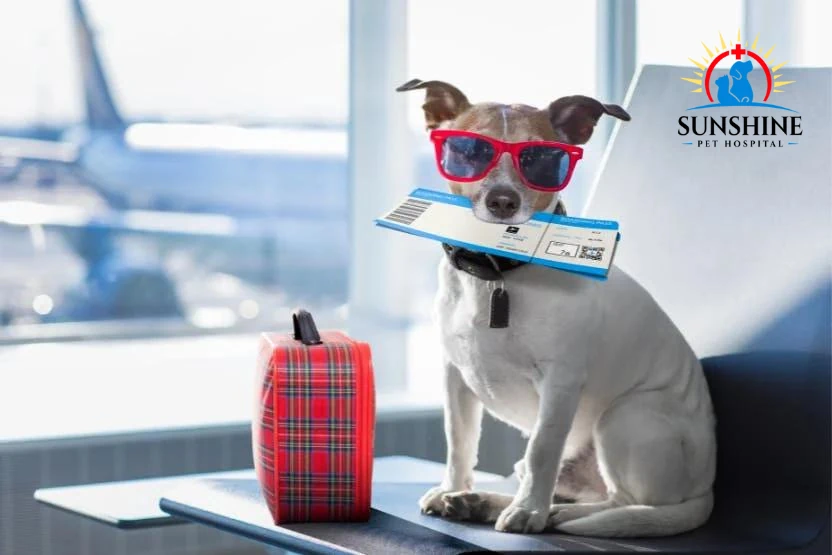Are you flying or traveling internationally with your pet dog or cat? When traveling internationally or back to the United States, you must have all the necessary documentation for your pet.
Make sure your pet has had all necessary vaccinations, and paperwork is in order before your trip. Don’t forget to get going on things early if it’s your first time managing international pet travel. Consult your vet as soon as possible if you plan an international trip.
By preparing everything earlier, you can guarantee your pet is fit for international travel and abides by all laws and regulations of your destination and the United States. So don’t procrastinate on getting ready for your trip; give yourself plenty of time.
Typical requirements for international pet travel include:
- Vaccinations
- Health records
- Licenses
- Permits
- Blood tests
It is essential to research the specific requirements of your airline and destination country.
Getting Started with International Pet Travel
Talk to your veterinarian about your dog or cat’s overall health as a first step in preparing it for air travel. Your veterinarian will be able to give you an accurate assessment of your pet’s health and work with you to get them in tip-top shape for the trip. Also, please consult your veterinarian if you suspect your pet suffers from obesity or any other medical condition.
Your veterinarian will perform all the screenings and vaccinations mandated by your destination country. The veterinarian will also implant the microchip conforming to ISO standards. Before entering their territory, many nations have visitors undergo external and internal parasite treatment. Speak with your veterinarian to discuss the best course of treatment for your pet.
Get your pet groomed before you take off; shorten its nails to avoid scratches, and cut its long, unruly hair so it can relax during the flight.
Most importantly, your pet should be crate-trained before you leave. IATA regulations require that your pet’s travel crate be large enough to allow your dog or cat to stand up, turn around, and lie comfortably.
As early as possible, start crate training to help your pet view the crate as a positive and secure environment. Get your pet used to spending the night in the crate by slowly increasing the time spent there. Your dog or cat will have to spend many hours confined in the crate during the flight. Your pet can learn to relax in a new environment and around unfamiliar people with the help of crate training.
When flying, pets such as dogs and cats are transported in a special pressurized and temperature-controlled section of the plane’s cargo hold. In addition, your pet’s crate will be fastened to the aircraft to ensure it doesn’t move around during the flight.
A long international flight could be traumatic for naturally timid pets or fearful of new situations. Getting your pet used to new and different environments and helping them become comfortable in them can significantly improve their ability to deal with stress.
Regular exposure to other dogs and strangers, such as at a dog park, dog-friendly restaurant, or doggy daycare, will help your pet remain calm and collected on long car rides. Observe your pet’s reaction to the noise and motion of the car by taking it on trips. Your pet can learn to relax in a crate while traveling in a vehicle with the help of treats and reassurance.
Ensure your pet is used to being around lots of people and noise before taking them to the airport. It may help to expose your pet to loud noises and large crowds by taking it with you on outings to busy public places. Gradually introducing it to new environments and situations is essential to ensure that your pet remains relaxed and calm throughout the flight and transit.
Working with US and International Airlines
To what extent and in what conditions pets are permitted to fly is subject to change from airline to airline. Your pet may be able to fly with you in the cabin or the cargo hold, depending on the policy of the airline you’re flying with. Make sure to check with your airline in advance.
Small felines and canines that can be carried in under-seat carriers are permitted on airlines that transport pets. In the event of a delay, their owners are responsible for providing care. They may be transported as cargo in a climate-controlled hold if the airline does not permit them in the cabin. It’s possible that cats and dogs would prefer this method of travel and rest because it’s quieter and darker.
There’s also the option of sending your pet as air cargo on a separate flight. If this is your preference, the size of your dog or the rules of the country of destination makes it necessary to acclimate your pet to the shipping kennel in advance.
For safe transport, check that the door is latched correctly. Consult your veterinarian to find out the optimal time to feed and water your pet. You must arrange for pickup at the destination airport if your pet is shipped as air cargo.
Some US carriers do not allow pets to be shipped from May through September in the Northern Hemisphere summer. Safety is always a concern when taking a pet on an airplane flight, no matter what time of year it is. If a dog or cat must travel in cargo, they should be provided with a secure container large enough to allow them to stand, sit, turn around while standing, and lie comfortably.
When bringing a pet or service animal on a cruise, the rules and documentation required can vary widely between vessels. Make sure to check with the cruise line in advance. In addition, you must comply with federal entry requirements to enter or re-enter the United States with a pet after an international trip on a cruise ship or other maritime vessel.


